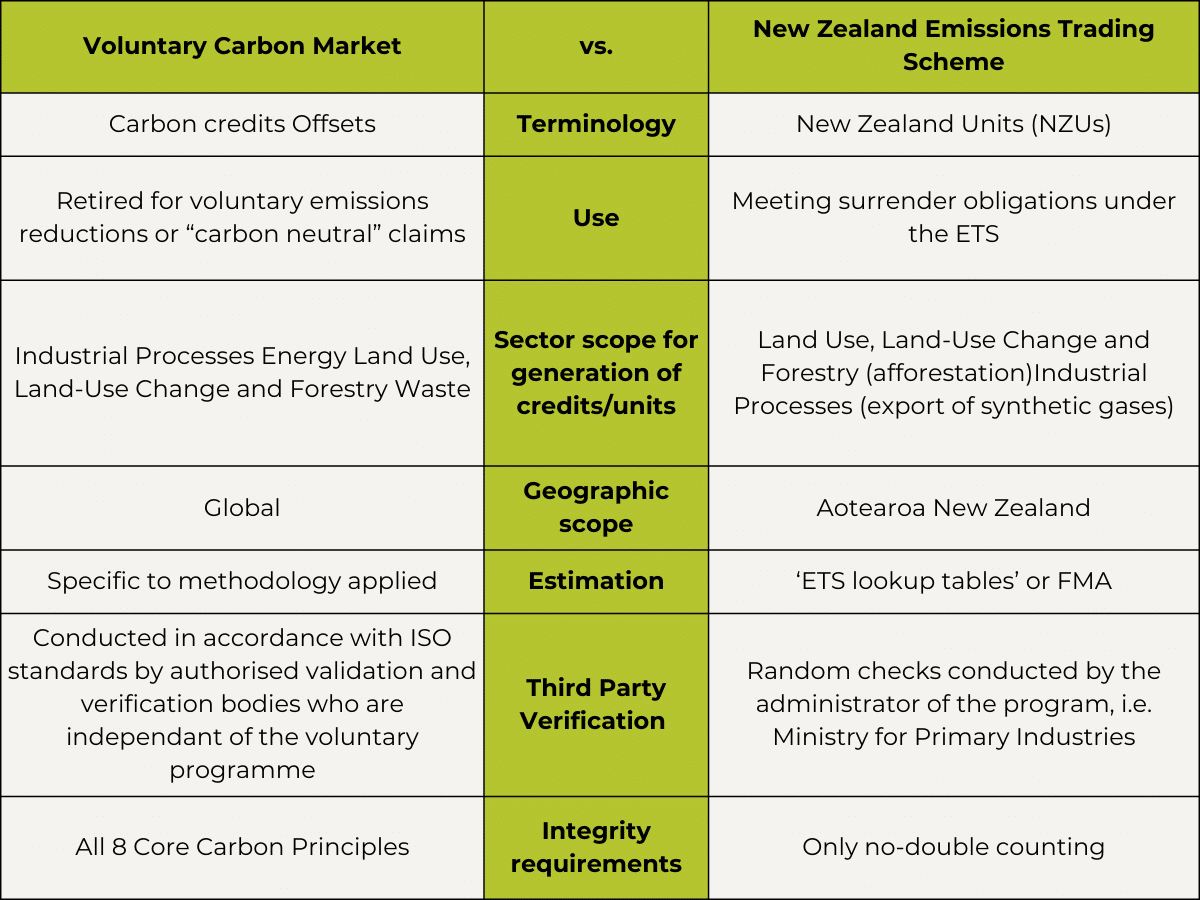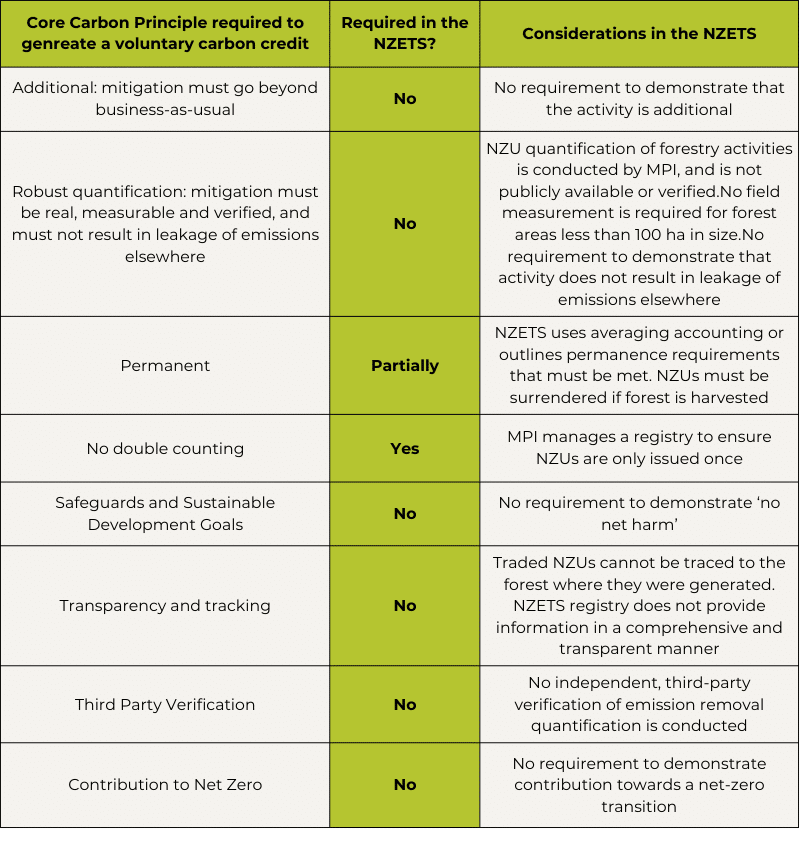Aotearoa New Zealand is one of 36 jurisdictions worldwide that has taken action on climate change by adopting a government regulated emissions trading scheme. The Aotearoa New Zealand Emissions Trading Scheme (NZETS) is compliance market where “mandatory participants” are required to surrender New Zealand Units (NZUs) to the government for their emissions.
NZUs can be generated from participants who voluntarily register and receive NZUs for activities that remove carbon from the atmosphere, such as carbon sequestration by trees.
Voluntarily opting into the NZETS is not the same as participating in the voluntary carbon market (VCM).
The VCM, as the name suggests, is a self regulated global marketplace where businesses and individuals trade carbon credits without legal obligation. Companies use it to achieve additional climate goals, like offsetting emissions or making claims such as being “carbon neutral” or “net zero”. Unlike the compliance-driven NZETS, the VCM provides an avenue for voluntary action beyond what’s legally required.
The table below breaks down the key differences between units generated in the NZETS and the VCM.

The VCM isn’t just one market but a network of standards and platforms globally, following guidelines from the Integrity Council for Voluntary Carbon Markets (ICVCM). These guidelines, known as the Core Carbon Principles, ensure the carbon credits traded on the VCM represent genuine reductions or removals of greenhouse gases. In contrast, NZUs don’t have to meet these voluntary principles; they are bound by the rules set by the government under the Climate Change Response Act 2002.

This difference presented in the table above is critical—NZUs and voluntary carbon credits are not interchangeable. NZUs cannot be used to claim voluntary climate mitigation, and voluntary carbon credits won’t satisfy compliance obligations under the NZETS as previously communicated by the Government.

